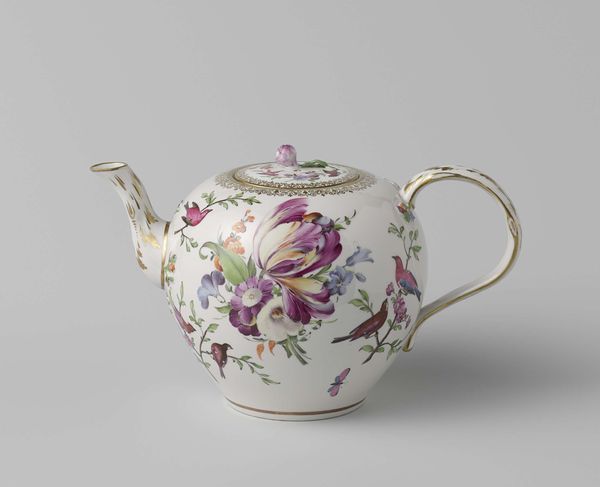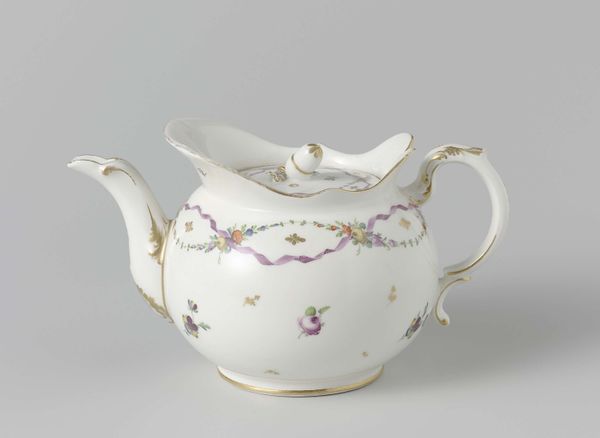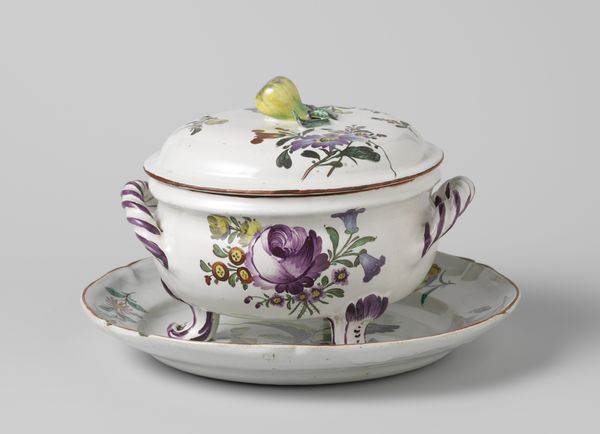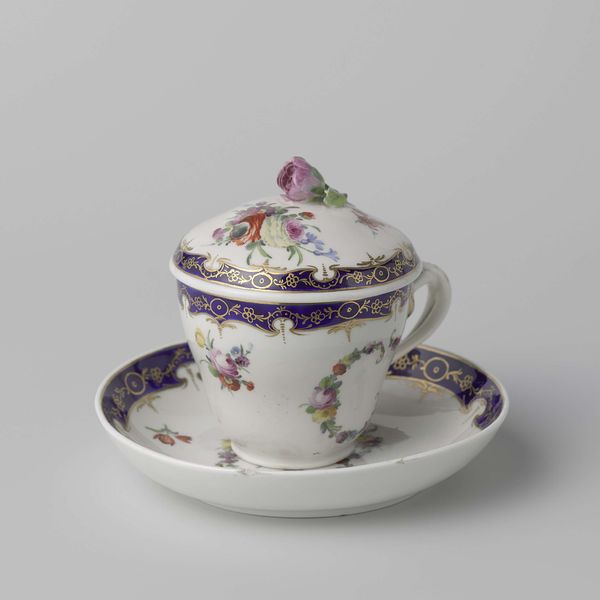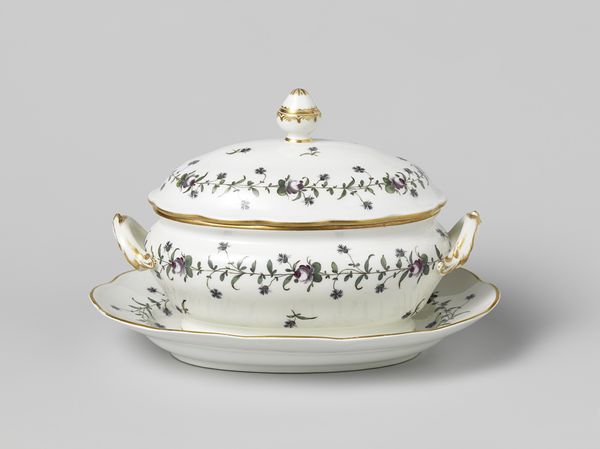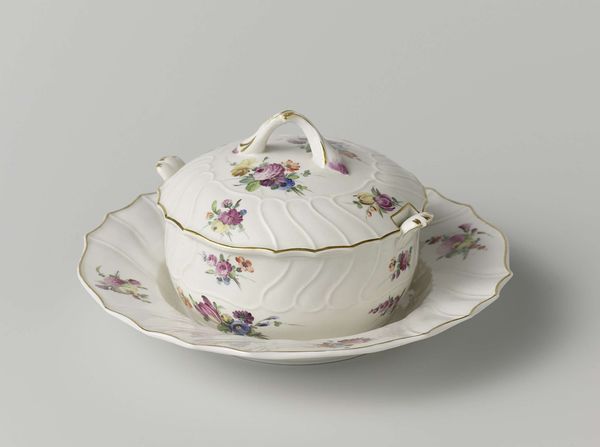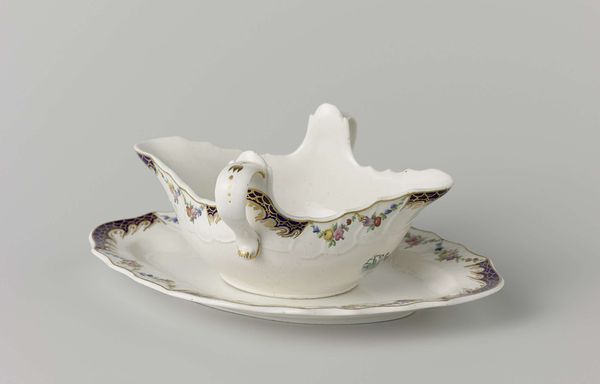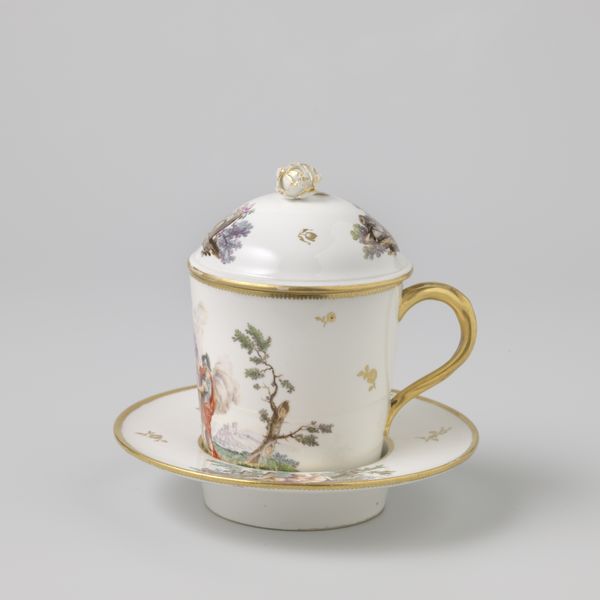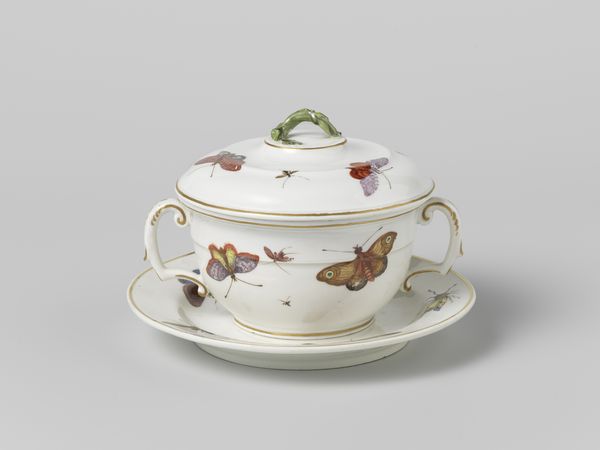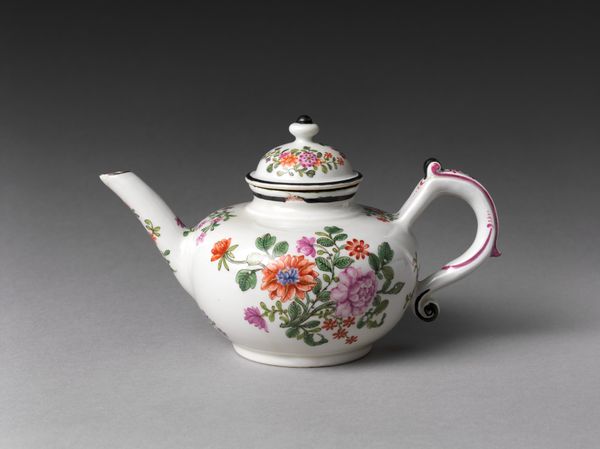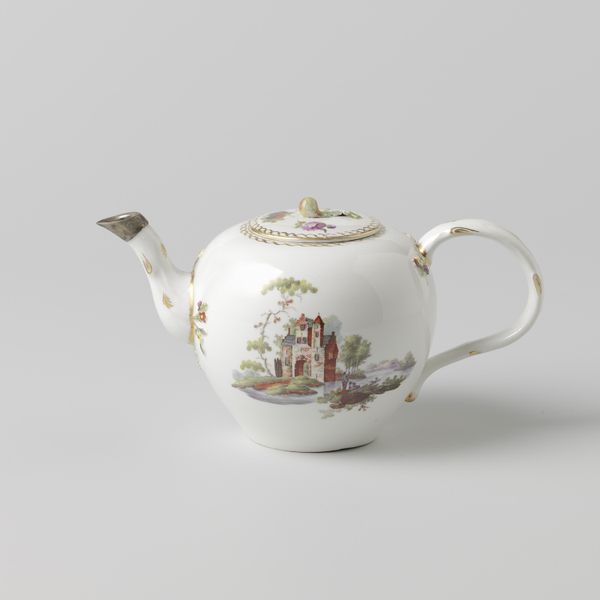
Dimensions: height 7.1 cm, width 18.4 cm
Copyright: Rijks Museum: Open Domain
Curator: Here we have a gorgeous porcelain tureen and stand, dating back to between 1777 and 1790. It comes from the Porseleinfabriek Den Haag. Editor: What immediately strikes me is its opulence. The elaborate floral garlands painted on the white porcelain scream aristocratic luxury. Curator: Absolutely. Let's think about what this kind of piece represents in the context of the late 18th century. These porcelain objects were signs of power. The delicate craft of porcelain production demanded skilled labour, resources, and global trade connections. So, owning such objects visually reflected political and economic status, marking divisions of wealth. Editor: Yes, porcelain itself had a loaded social life in the 18th century. The manufacturing process itself becomes central: the mining of kaolin, the skill involved in the molding, firing, and painting, not to mention the commerce associated with its distribution and display. Someone handled the earth and someone crafted the pigments; their unseen work exists within the material and our reading of the piece. Curator: And think about the implications in a place like The Hague. As a smaller, more localized pottery factory, there is still a global connection to other trading hubs across Europe that made similar items—linking disparate workshops through market demand and stylistic imitation. What could eating from a beautiful bowl mean in contrast to the rising hunger that sparked the revolution in France during this period? Editor: Exactly. It embodies rococo design with its flowing lines, asymmetry, and whimsical botanical elements; the object almost appears like a sculptural statement. Curator: Right! It is an embodiment of Rococo aesthetics with social meaning, one shaped by labor, market economics and political strife. Editor: A fascinating thing to keep in mind, now, when considering it within a modern museum.
